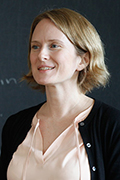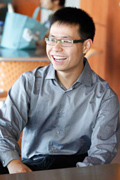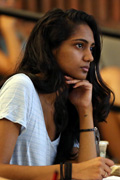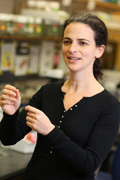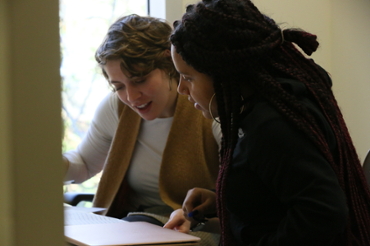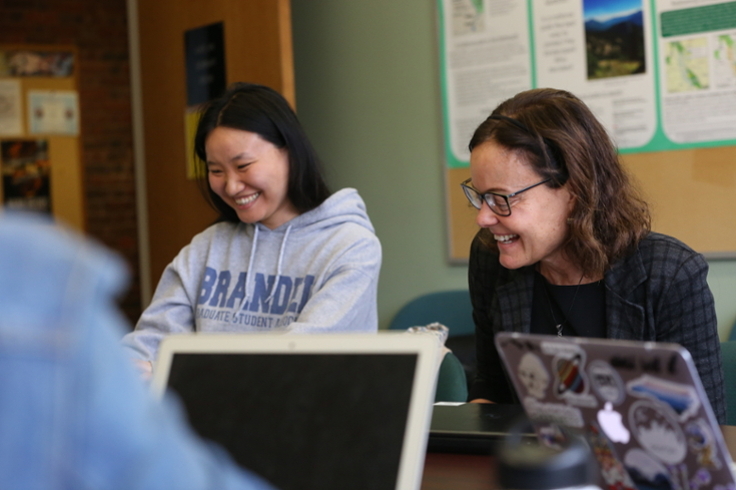Working in the Lab of a Future Nobel Laureate
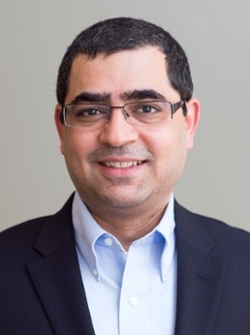 October 17, 2017
October 17, 2017
Simon Goodacre | Graduate School of Arts and Sciences
Vipin Suri, PhD’01, the GSAS representative on the board of directors for the Brandeis University Alumni Association, came to Brandeis from his native India in 1995 to pursue a doctorate in biochemistry. During his first year in the program, Suri focused all of his research in Brandeis’ biochemistry laboratories. “I was very closed minded about it,” he admits, but a couple of professors encouraged Suri to venture outside his comfort zone and consider a rotation in another discipline. He somewhat grudgingly tried out the lab of Michael Rosbash, the Peter Gruber Endowed Chair in Neuroscience and recipient of the 2017 Nobel Prize in Physiology or Medicine. The experience ultimately changed the direction of Suri’s academic exploration, and he ended up conducting interdisciplinary research in Rosbash’s lab for the next five years. We asked Dr. Suri to tell us what it was like working with a future Nobel Laureate.
What did you think when you read the news about the Nobel Prize?
I actually saw it first on Twitter around 6:00 am on Monday and it was huge (and very lovely) surprise. I immediately went to the Nobel committee website to confirm and then sent Michael a congratulatory note. The odds of a Nobel for the groundbreaking discoveries made by Michael, Jeff and Mike Young and their teams were pretty strong so it was more a question of “when?” than “if” and it was just wonderful to see that the Nobel committee decided that 2017 was the year.
Of all the scientific research being conducted in the world, what makes the contributions of these three men worthy of this distinction?
The key, Nobel-worthy advance that Michael, Jeff and Mike Young made was to explain how a complex behavior is controlled by a genetic and molecular circuit. Their investigations reveal a clear picture of what the components are, how they interact with each other and how they connect the behavior to external environmental cues. The behavior they described is a fundamental, evolutionarily ancient system that connects the inner workings of living things to earth’s rotation around the sun. While there are several significant advances being made in many fields, the work of Rosbash, Hall and Young stand out as they really changed the scientific paradigm regarding our understanding of behavior, how genes and molecules control it and connect it to the environment.
How did you come to study in the Rosbash lab? What was it like?
I came to Rosbash’s lab as a biochemistry rotation student mostly because a biology rotation was a requirement and all my other rotations were in enzymology and structural biology which is where my interests lay at that time. Fruitflies, genetics etc. were all foreign to me (as actually was the location of Rosbash lab itself at Bassine Penthouse, which I didn’t know existed till then). The rotation was an eye-opener at many levels. Firstly, the lab was a powerhouse and buzzing with energy all hours of the day unlike any other lab I had seen to that point. Secondly, the science was extraordinarily interesting. The lab had recently published a landmark paper (Zeng et al (1996), Nature, 380, 129 – 135) that described the discovery of Timeless, the second Drosophila circadian pacemaker gene. The paper was remarkable both for the magnitude of discovery itself but it appealed to me for two additional reasons: (i) it was the first molecular link between light and clock and opened up that link to biochemical investigations and (ii) the methodology and techniques used in that paper were so novel, creative and comprehensive that it was clear to me that Rosbash’s lab would be a great place to learn how to experimentally approach complex questions. Lastly, Michael himself was so full of energy and ideas, always walking around the lab and bouncing ideas and analysis of everyone be it undergrads, rotation students, graduate students and postdocs, and scientific staff.
What was Rosbash like as an advisor?
To anyone in the lab, or pretty much anyone who knew Michael, it didn’t take long to realize that Michael is not only a brilliant scientist, but just generally a genius. The rate at which he could assimilate information, synthesize ideas and come up with experiments to test the ideas was astonishing. What was especially impressive was that he was basically running two labs in parallel, one focused on Drosophila circadian rhythms and another on mRNA processing and export in yeast. He was high energy, restless and relentless especially once he had an idea or an observation stuck in his mind. Michael’s view was that biology is about running experiments and making observations and the path to discovery requires complete commitment, hard work and constant experimentation. He made sure we were never hurting for resources or equipment (he also made sure we were using the resources at all times, with late night calls and weekend drop ins). Michael was very plugged into the scientific community worldwide and generally had pretty good sense of what was going on in the field. On many occasions, he would see something at a conference or a talk and immediately call folks in his lab working on similar problems to brainstorm. The lab itself was run very efficiently, thanks to an amazing number of extraordinarily talented, generous and personable folks who worked extremely hard to keep things going. One of my favorite features was our weekly group meeting which also included a lab lunch where folks in the lab took turns catering food for the lab. Michael’s lab was quite diverse with many superb cooks. Above all, as an advisor (and as a person) Michael was extremely generous, as Lisa noted in her remarks at the Nobel press conference. Whether it was sharing his thoughts, providing a recommendation letter (I owe both my career and my US permanent residence to his extraordinarily effective endorsement), sharing his brownie (he offered on more than one occasion), or his beloved Saab convertible, he wouldn’t think twice before offering it. Michael introduced me to the Red Sox, and although I haven’t maintained his level of fanaticism over the decades, I still fondly recall the first game I saw at Fenway with Michael. It was Red Sox-Indians, Pedro vs Colon and the Red Sox won 1-0 on a Midre Cummings homer.
Can you remember any particular anecdotes worth sharing?
While there are several memories I cherish from my time in the lab, one of my favorites was when we pulled out the sequence of Clock from the Drosophila expressed sequence tags database. Genomics was just starting to make an impact on research at the time and I was constantly running searches for PAS (PER-ARNT-SIM) domain proteins as the sequences were deposited. Ravi Allada, a posdoc in the lab at the time, was genetically mapping Jrk (a mutant allele of Clock) mutant flies. I pulled out the sequence late Friday night and took it to Ravi. There was no doubt in our minds that we had Drosophila Clock gene. After thinking about how best to present the data to Michael, we decide to casually leave the alignment on his desk. Michael saw it Saturday early afternoon (of course he came to the lab during the weekend) and immediately came to the fly half of the lab. It was one of the few occasions I can remember when he was at loss to clearly articulate his thoughts (he paced up and down the lab hallway randomly cursing in the air). Subsequently, we pulled out cycle (postdoc Joan Rutila was genetically mapping it) as well, and the two reports describing the genes were published in Cell about a month later.
What was the collaboration like between Rosbash and Hall?
A catalytic event initiating the series of investigations that culminated into the Nobel Prize was the coming together of Jeff and Michael. Outside of the shared trait of brilliance, the two couldn’t be more orthogonal personality-wise and in terms of scientific interests. Jeff was quiet, mild and introverted. Michael was loud, blunt and aggressive. Jeff was deep into genetics and behavior, Michael was all about molecular biology, biochemistry and mechanistic circuitry. The two labs were geographically adjacent for some time, until Michael’s lab moved to the second floor or Bassine. There was constant interaction between lab members. Jeff and his lab routinely attended our lab meetings and shared flies, equipment, thoughts and analyses (in one case, they also ended up sharing their lives as one of Michael’s grad students married Jeff’s postdoc).
